The Christie Theatre Organ was installed at the Gordon Craig Theatre in 1987. Stuart Rose guides us through the history of this mighty instrument!
Making the Music
Like all pipe organs, the sound doesn’t come from the keyboard and isn’t generated electronically. The keyboard, or console controls the flow of air through a series of tuned pipes. In a church, these pipes are usually seen, but in a theatre, or more commonly a cinema, the pipes would be hidden in chambers behind ornate grilles in the walls at the side of a cinema auditorium. One of the main differences between the two types of organ is that a much wider range of sounds and special effects can be generated on a theatre organ.
This Christie, serial number 2861 was known as a 3/10, that is an organ with 3 manuals (keyboards) and ten ranks of pipes. Over the years modifications have been made, bringing the specification up to 3/11. The coloured tabs arranged in an arc around the console are the stops, the organist uses these to control a particular type of pipe (or percussion instrument) with one of the manuals. Pipes are made from wood or metal and each rank of pipes is made differently, which influences the tone, creating sounds similar to flutes, reed and stringed instruments. Two manuals would allow the organist to play different sounds for melody and accompaniment, but a third was useful to change quickly to another sound during a fast-paced tune. Unique sounds can be made by adding various stops, either similar sounding pipes separated by a number of octaves, mixing flutes with strings or reeds, or adding a tuned percussion instrument such as glockenspiel or bells to sound with each pipe.
At the organist’s feet are pedals, which are arranged as a musical keyboard and are usually used for playing the low notes, whilst others operate some of the effects such as drums rolls, horns and bells. The large, central pedals control the ‘volume’ of the instrument by opening and closing shutters at the front of the pipe chambers.
Diagrammatic layout of the Christie Organ at GCT
This particular Christie was built in 1932 for a new Cinema in Liverpool, so how did it end up in a modern 1970s Theatre?
The Sound of Silents
Cinema or theatre organs were used in the early days of cinema, around 1920 when the feature films were only in black and white and had no sound track. A small cinema may have a pianist, improvising melodies to convey the mood of the film, but a larger cinema could have a small orchestra or a cinema organ. The organ could re-create many of the sounds of a full orchestra and although an expensive purchase, it was considered cheaper to pay for a few organists rather than orchestra musicians. In addition to the music, the organ could add special effects, such as steam trains, whistles, bells, bird tweets, horses hooves and even thunder. Other popular cinema organs in Britain were made by Compton in London and of course, the “Mighty” Wurlitzer from New York.
What we now call ‘silent movies’ only lasted until the late 1920s when the ‘talkies’ arrived and reliable techniques were developed to combine a sound track alongside the images on the film. No longer required to accompany the film, the cinema organs were still used as a means of entertainment, with the organist playing popular tunes before the performance and during the interval. The organs became decorated with bright illuminated surrounds known as jelly-moulds, they would often be located on a motorised platform in front of the screen and appear to rise through the floor as the organist started playing. The organists became stars, often broadcasting concerts on the radio or releasing records and being known for opening or closing their performance with a particular signature tune.
Cinema attendance hit its peak just after the second world war in 1946 but steadily declined in the 1950s and 60s. Part of this decline was due to the growing popularity of television in the home people could stay in and be entertained by the BBC. The ITV service started in the mid to late 1950s and began to show more appealing programmes and popular films, keeping the cinema audiences at home.
An Organ for Liverpool
The Gordon Craig’s Christie built by a North London company, Hill, Norman & Beard Ltd and was installed in the large Carlton Theatre at Tuebrook, Liverpool, which opened in 1932. An impressive building with nearly 2000 seats, a balcony, stage, dressing rooms and a cafe. The console was located on a lift in front of the stage, where the curtains behind were decorated with silhouettes of two leaping deer. The Carlton Theatre’s secretary wrote to The Christie’s manufacturers later that year to tell them how his customers were ‘delighted’ with the quality of sound from the instrument and that the Organist, James Bell’s interval performances had become an ‘outstanding attraction’.
The organ was played regularly until the mid 1950s but by the early 1960s had been removed from the cinema and the Carlton’s cafe had been closed and converted into cinema offices. The Carlton was reconstructed in 1972 but with its seating capacity reduced by two-thirds. It closed in 1982, but the building remained standing until it was demolished in 2017.
As cinemas audiences declined, some cinemas closed and were demolished, others were redeveloped into smaller venues or possibly became bingo halls and their organs were sold off. Some organs ended up being installed in schools, churches, town halls, pubs and even in the hands of private enthusiasts who had the console and associated pipes installed in their homes! Some organs were broken-up with spare parts and pipes used to repair, or augment surviving organs.
Stotfold
A long way from Liverpool, but near to Stevenage is the Bedfordshire village of Stotfold, which in 1937 had its own cinema, The Regent, with nearly 700 seats. It also had its own organ, but sources disagree if it was also a Christie, or a Wurlitzer, it definitely wasn’t a new organ and was said to have come from a cinema in Glasgow. The Regal survived until it closed in 1952 and one story is that the organ was removed and sent back up North to Birkenhead (near Liverpool) to replace a Compton organ installed in the Ritz cinema which was damaged in a fatal bomb strike during the Second World War.
The Regal Cinema tried to find success as a bingo club, but this was short-lived. The building was eventually taken over be the Stotfold Ex-Servicemen’s Club and equipped with an upstairs cafe, games room and a dance floor where the cinema seats had once been. One club member, a local organist, Bob Simpkins was keen to have a cinema organ back in the building and purchased the Christie from Charles Smith and with help from Phil Burbeck and Rupert Kettle, installed the pipework in chambers under the stage. The Christie re-opened at its new Bedfordshire home in September 1963, played by the well-known organists William Davies and Jackie Brown.
Bob was keen to make improvements to the organ and had sourced some pipes from a Yorkshire-built ‘Conacher’ organ in Nottingham. Some of the Christie’s original pipes were removed and alterations were made in the Stotfold organ chamber to accommodate these new additions but sadly Bob died before the work was completed. This left Stotfold Social Club with an incomplete organ and to make matters worse, many parts of it had been damaged by ground water seeping into the chambers.
Greene King, the local brewery kindly assisted by installing a pump to control the water level and a the social club asked a professional organ builder, and co-founder of the Theatre Organ Preservation Society, David Pawlyn to survey the organ and advise on completing Bob’s unfinished work. David managed to track down some of the Christie’s original pipe work at a sale and then acquired other missing pipes from organs removed from cinemas in Leighton and Slough, amongst others. These were re-installed, and repairs made to damaged air trunking and the wind chests, on which the pipes stand. The final restoration work and installation of the percussion instruments was carried out by members of the newly-formed Stotfold and District Organ Society. John Abson, Keith Chambers, Clive Hawes and Bruce Makepeace, Clive and Bruce also maintained a Wurlitzer organ at the Ritz Cinema in Luton, (latterly the Liquid & Envy Nightclub). A ‘Rainbow style’ illuminated surround was fitted around the console, sourced earlier by Bob Simpkins from the Compton organ at the Ritz cinema in Maidstone. The society was also grateful for the assistance of Les Rawle of the American Theatre Organ Society and also Frank Fowler, who was the Managing Director of Hill, Norman & Beard – the original manufacturers.
The Stotfold and District Organ Society was formed in 1979 with the aim of keeping the Organ in working order and performing regular concerts with the co-operation of the Stotfold Social Club. The repaired Christie, had another opening concert in Stotfold in April 1980, once again with William Davies at the console and joined this time by George Blackmore, the Patron of the new society. Regular Sunday afternoon organ concerts continued for the next 6 years until the social club announced plans to redevelop their site, demolishing the old cinema and erecting a new building that would not have space for The Christie.
The Gordon Craig, The Perfect Place
The Organ Society started to look for a new home for the organ and negotiated to purchase it from the Social Club if they could find somewhere suitable. They approached the Gordon Craig Theatre management, who after a seeing the instrument played by society member, Bob Freeman, agreed to undertake a feasibility study to see if the theatre could accommodate the instrument. It transpired that the auditorium was very suitable, with enough space to the right of the stage to house two pipe chambers which would return the Christie to its original design that allowed the organist to better control the balance of their music. Plus, the theatre’s motorised orchestra pit would allow the console to rise to the stage, just as they did during the heyday of cinema.
The Organ Society had plenty of keen volunteers who would have been happy to work on the re-location of the Christie, but trying to schedule their time around the opening hours of a working theatre would prove difficult. To that end, Stevenage Borough Council, the operators of The Gordon Craig Theatre decided it would be best to entrust the work to a professional company and the contract was awarded to Hill, Norman & Beard, who manufactured the organ 55 years earlier. They removed the organ from Stotfold within a week in March 1987.
Renovation and Modernisation
Before re-installation in the Gordon Craig, further repair work was required to bring the organ back to reliable working order. Four wind chests were repaired and in once case replaced, tremulants re-leathered and some pipes that were too tall for the new chambers had to be re-mitred. One major change was the control system; the electro-mechanical switch gear couldn’t be guaranteed continue working correctly due to its age, so a decision was made to replace this with a new digital, electronic system. This had the advantages of reducing the number of connecting cables between the console and the chamber and also allowed for a recording system to log all the organist’s keystrokes to a disc-drive. A performance could now be repeated at will, all the pipes and percussion faithfully reproducing the music without the need for the organist to be present.
The non-standard illuminated surround was not re-instated, so the console looked as it did back in 1937, the only problem with this is that the illuminated surround also included the organist’s seat, so a replacement had to be sourced. Hill, Norman & Beard no longer held any drawings for these old organs, much documentation had been destroyed in a factory fire during the Second World War. The company managed to borrow an original Christie stool and North Herts Organ Society member John Chivers produced a faithful copy.
We’ll Meet Again
The re-homed Christie had its Grand Opening Concert at the Gordon Craig Theatre at 3:00pm on Sunday 27th September 1987. Tickets were £2.50, with a reduction to £2.00 for Organ Society members. Five famous organists performed that afternoon; Frank Fowler (Managing Director of Hill Norman & Beard), George Blackmore, Joanna Fraser, Janet Dowsett and finally William Davies.
View the GCT First Organ Concert Souvenir Brochure 1987
George Blackmore had played the Christie at its last concert in Stotfold, he ended this concert with “We’ll Meet Again” – a tune he said had proved lucky for a Wurlitzer organ in Kilburn, London that had faced an uncertain future. It was fitting that he was first up to the console at the Gordon Craig to play the Christie once more.
Fast forward to 2019 and you’ll find the Wurlitzer in Kilburn is no longer played and there hasn’t been a Christie Organ Concert at the Gordon Craig since 2011.
Researched and written by Stuart Rose with input from Peter De Vile

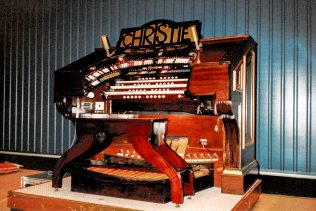
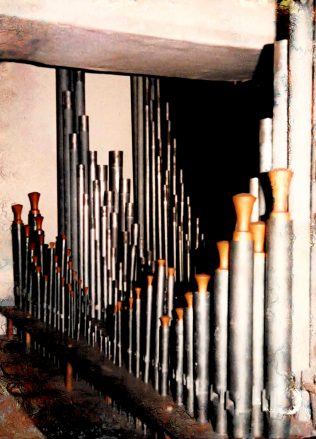
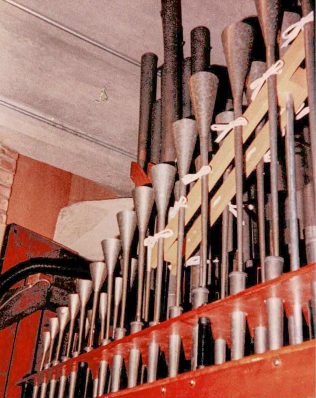
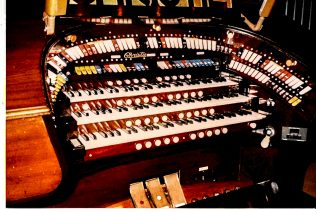
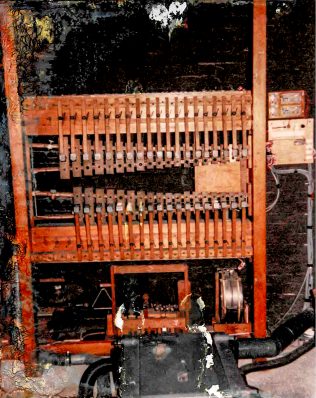
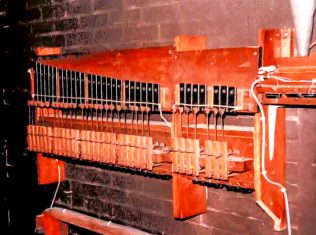
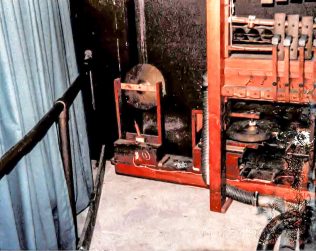
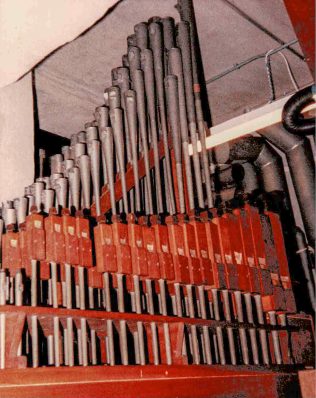
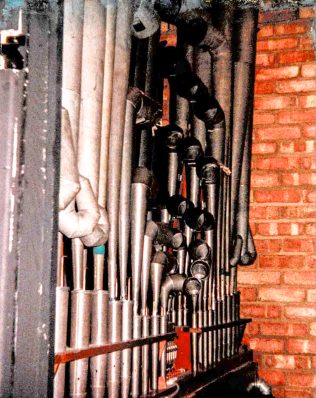
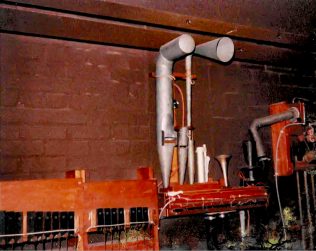
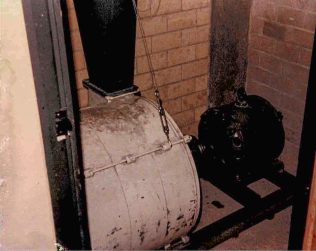
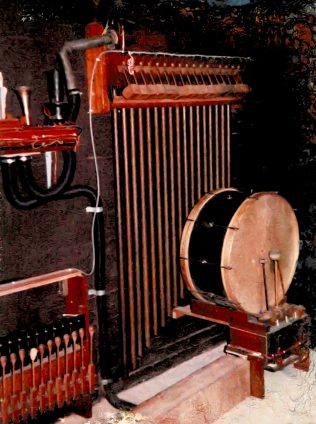
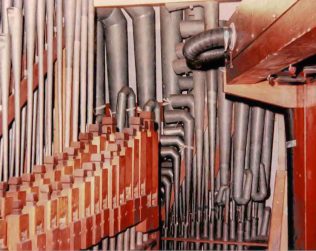
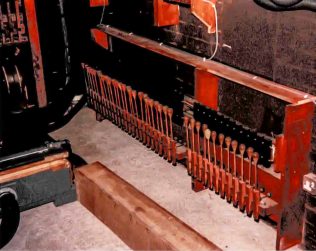
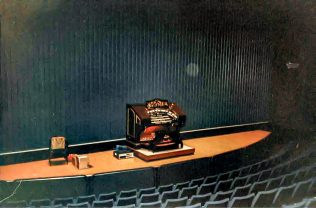
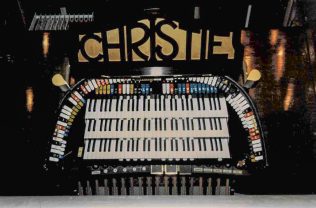




No Comments
Add a comment about this page